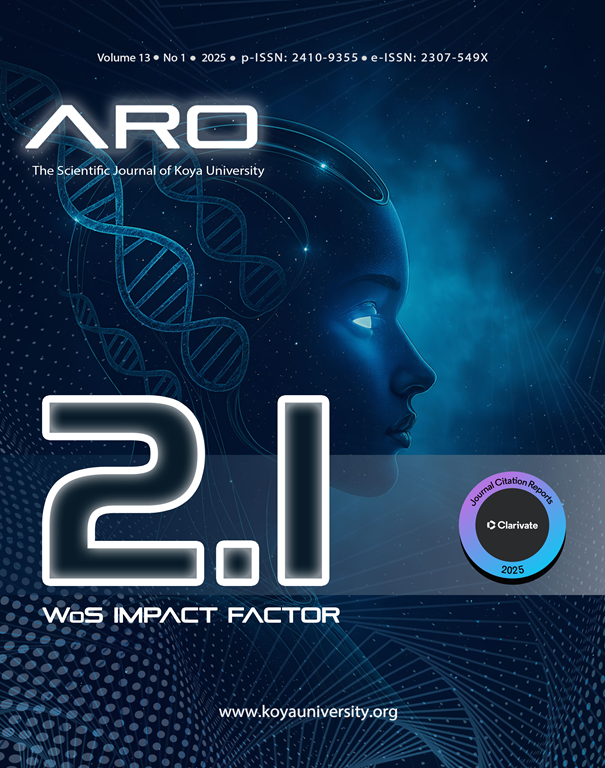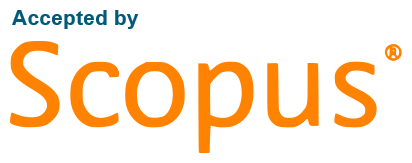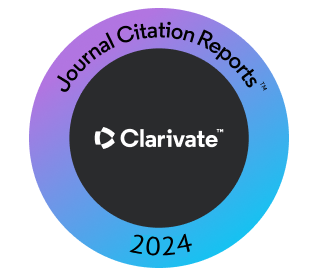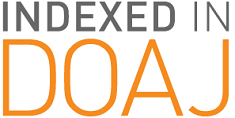In-depth Analysis on Machine Learning Approaches
Techniques, Applications, and Trends
DOI:
https://doi.org/10.14500/aro.12038Keywords:
Comparative Metrics, Learning challenges, Machine learning algorithms, Machine learning structuresAbstract
Machine learning (ML) approaches cover several aspects of daily life tasks, including knowledge representation, data analysis, regression, classification, recognition, clustering, planning, reasoning, text recommendation, and perception. The ML approaches enable applications to learn and adapt with or without being directly programmed from previous data or experience. The ML techniques, coupled with current technologies, provide a range of solutions, starts from vision-based applications to text-generation applications. To this end, this article presents a comprehensive overview of the approaches of ML, including supervised, unsupervised, semi-supervised, reinforcement, and self-learning. This review critically examines the roles performed by these aforementioned approaches in terms of their weaknesses and strengths. Furthermore, within this study, a new comparative analysis is conducted by reviewing existing studies and evaluating ML techniques using metrics including data requirement, accuracy, complexity, interpretability, scalability, applications, and challenges. Thereafter, the implemented ML techniques are classified, and their key findings are examined. The comprehensive review demonstrates that neither standalone nor hybrid ML techniques can completely satisfy all of the evaluated metrics, the necessity of customized solutions based on the requirements of particular applications.
Downloads
References
Abdullah, A.A., Abdulla, S.H., Toufiq, D.M., Maghdid, H.S., Rashid, T.A., Farho, P.F., Sabr, S.S., Taher, A.H., Hamad, D.S., Veisi, H., and Asaad, A.T., 2024. NER-RoBERTa: Fine-Tuning RoBERTa for Named Entity Recognition (NER) within Low-Resource Languages. [arXiv Preprint].
Abdullah, A.A., Ahmed, A.M., Rashid, T., Veisi, H., Rassul, Y.H., Hassan, B., Fattah, P., Ali, S.A., and Shamsaldin, A.S., 2024. Advanced Clustering Techniques for Speech Signal Enhancement: A Review and Metanalysis of Fuzzy c-Means, k-Means, and Kernel Fuzzy c-Means Methods. [arXiv Preprint].
Adamu, J.A., 2019. Advanced stochastic optimization algorithm for deep learning artificial neural networks in banking and finance industries. Risk and Financial Management, 1(1), p. 8. DOI: https://doi.org/10.30560/rfm.v1n1p8
Aiman, M., and Rosnafisah, B.S., 2017. Using KNN Algorithm for Classification of Textual Documents. Malaysia, IEEE.
Ajay, S.S., Thirunavukkarasu, K., Prakhar, R., and Sachin, G., 2018. Classification of IRIS Dataset Using Classification Based KNN Algorithm in Supervised Learning. IEEE, United States. DOI: https://doi.org/10.1109/CCAA.2018.8777643
Alboukadel, K., 2017. Practical Guide to Cluster Analysis in R Unsupervised Machine Learning. 1st ed. STHDA, Bad Vilbel.
BalaAnand, M., Karthikeyan, N., Karthik, S., Varatharajan, R., Manogaran, G., and Sivaparthipan, C.B., 2019. An enhanced graph-based semi-supervised learning algorithm to detect fake users on Twitter. The Journal of Supercomputing, 75, pp. 6085-6105. DOI: https://doi.org/10.1007/s11227-019-02948-w
Carlos, F., Flora, F., Miguel, G., Azevedo, O., Sousa, N., and Erlhagen, W., 2019. Gait Classification of Patients with Fabry’s Disease Based on Normalized Gait Features Obtained using Multiple Regression Models. In: IEEE International Conference on Bioinformatics and Biomedicine (BIBM).
Changde, D., Changying, D., and Huiguang, H., 2021. Multimodal deep generative adversarial models for scalable doubly semi-supervised learning. Information Fusion, 68, pp. 118-130. DOI: https://doi.org/10.1016/j.inffus.2020.11.003
Christine, W.C., Tontiwachwuthikul, P., Zeng, F., and Liang, Z.Z., 2020. Recent progress and new developments of applications of artificialintelligence (AI), knowledge-based systems (KBS), and machine learning (ML) in the petroleum industry. Petroleum, 6(4), pp. 319-320. DOI: https://doi.org/10.1016/j.petlm.2020.08.001
Chunrong, W., Jia, L., Isokawa, T., Jun, Y., and Yunni, X., 2019. Efficient Clustering Method Based on Density Peaks with Symmetric Neighborhood Relationship. In: The International Exchange Program of National Institute of Information and Communications (NICT).
Darbaz, M.H., Al-Barznji, K., and Mohammed, N.S., 2024. Accurate uncertainty dataset classification using hybrid deep learning models. International Journal of Advanced Processing Systems, 10, pp. 15-30.
Deepti, S., and Dilip, S.S., 2018. Prediction of Diabetes using Classification Algorithms. IEEE and Elsevier, India.
Fangming, G., Oayou, L., and Xinying, W., 2010. Semi-Supervised Weighted Distance Metric Learning for kNN Classification. IEEE Xplore, Changchun. DOI: https://doi.org/10.1109/CMCE.2010.5609815
Gao, H., Shiji, S., Jatinder, N.D.G., and Cheng, W., 2014. Semi-supervised and unsupervised extreme learning machines. IEEE Transactions on Cybernetics, 44(12), pp. 2405-2417. DOI: https://doi.org/10.1109/TCYB.2014.2307349
Gongde, G., Wang, H., Bell, D., Bi, Y., and Greer, K., 2003. KNN Model-Based Approach in Classification. Northern Ireland, UK, Springer.
Guo, P., Lijuan, W., Jun, S., and Fang, D., 2021. A hybrid unsupervised clustering-based anomaly detection method. Tsinghua Science and Technology, 26(2), pp. 146-153. DOI: https://doi.org/10.26599/TST.2019.9010051
Haitao, G., and Zhenhua, L., 2018. Safe Semi-Supervised Learning from Risky Labeled and Unlabeled Samples. IEEE Xplore, Japan.
Hemant, K.G., and Rishabh, C., 2017. Comprehensive Review on Supervised Machine. IEEE, United States.
Hooman, H.R., Tran, N.K., Betts, E.V., Howell, L.P., and Green, R., 2019. Artificial intelligence and machine learning in pathology: The present landscape of supervised methods. Academic Pathology, 6, p. 2374289519873088. DOI: https://doi.org/10.1177/2374289519873088
Hui, Y., Ping, Y., and Duo, L., 2019. Study on Deep Unsupervised Learning Optimization Algorithm Based on Cloud Computing. IEEE, United States.
Iqbal, S., Qureshi, A.N., Aurangzeb, K., Alhussein, M., Haider, S.I., and Rida, I., 2023. AMIAC: Adaptive medical image analyzes and classification, a robust self-learning framework. Neural Computing and Applications, 1(1), pp. 1-29. DOI: https://doi.org/10.1007/s00521-023-09209-1
Jwan, K., Abas, A.A., and Tarik, R., 2024. Exploring Public Service and Prosocial Motivation Using Machine Learning. [Authorea Preprints].
Kristina, P.S., and Miin-Shen, Y., 2020. Unsupervised K-Means Clustering Algorithm. Vol. 8. IEEE Xplore, Japan. DOI: https://doi.org/10.1109/ACCESS.2020.2988796
Kushal, R.D., 2020. Analysing the Role of Supervised and Unsupervised Machine Learning in IoT. IEEE, United States.
Manjula, C.B., and Balachandra, M., 2016. Performance Evaluation of Supervised Machine Learning Algorithms for Intrusion Detection. India, ScienceDirect.
Mrudul, D., Ritu, S., Saniya, S., and Krutika, M., 2019. Internet Traffic Detection using Naïve Bayes and K-Nearest Neighbors (KNN) Algorithm. Indea, IEEE.
Nergz, S.M., and Beitollahi, H., 2022. Accurate classification in uncertainty dataset using particle swarm optimization-trained radial basis function. NeuroQuantology, 20(6), pp. 166-179.
Nitis, M., Prajak, C., Thongchai, K., Suwat, R., Sabir, B., and Pitchayakit, B., 2018. Prediction of Prices for Used Car by Using Regression Models. IEEE Xplore, Bangkok, Thailand.
Perera, A.T.D., and Kamalaruban, P., 2021. Applications of reinforcement learning in energy systems. Renewable and Sustainable Energy Reviews, 17(1), p. 110618. DOI: https://doi.org/10.1016/j.rser.2020.110618
Rui, Z., Feiping, N., and Xuelong, L., 2017. Semi-Supervised Classification Via Both Label and Side Information. IEEE, United States.
Sarfaraz, H., Kandel, P., Bolan, C.W., Wallace, M.B., and Bagci, U., 2019. Lung and pancreatic tumor characterization in the deep learning era: Novel supervised and unsupervised learning approaches. IEEE Transactions on Medical Imaging, 38(8), pp. 1777-1787. DOI: https://doi.org/10.1109/TMI.2019.2894349
Sabr, S.S., 2025. A Comprehensive Part-of-Speech Tagging to Standardize Central-Kurdish Language: A Research Guide for Kurdish Natural Language Processing Tasks. s.l.: arXiv.
Sung-Jin, K., Chan-Ho, K., Sang-Yong, J., and Yong-Jae, K., 2016. Shape Optimization of a Hybrid Magnetic Torque Converter Using the Multiple Linear Regression Analysis. IEEE, United States.
Upasana, 2019. Al Zone. Available from: https://dzone.com/articles/introduction-to-lassification-algorithms [Last accessed on 2025 Oct 8].
Weihao, H., Di, S., and Theo, B., 2020. Guest editorial: Applications of artificial intelligence in modern power systems: Challenges and solutions. Journal of Modern Power Systems and Clean Energy, 8(6), pp. 1-2.
Wu, B., and He, S., 2023. Self-learning and explainable deep learning network toward the security of artificial intelligence of things. The Journal of Supercomputing, 79(4), pp. 4436-4467. DOI: https://doi.org/10.1007/s11227-022-04818-4
Xin, B., Chao, Z., Donghang, L., Yongjiao, S., and Yuliang, M., 2020. Efficient incremental semi-supervised classification over drifting and evolving social computing, Volume 8. DOI: https://doi.org/10.1109/ACCESS.2020.2965766
Yongjun, Z., and Siyu, Y., 2020. Semi-Supervised Active Learning Image Classification method Based on Tri-Training Algorithm. IEEE, United States.
Yuan, T., and Marc, C., 2019. A Case Study on Visual-Inertial Odometry using Supervised, Semi-Supervised and Unsupervised Learning Methods. IEEE, United States.
Zhang, K., Wang, J., Liu, T., Luo, Y., Loh, X.J., and Chen, X., 2021. Machine learning‐reinforced noninvasive biosensors for healthcare. Advanced Healthcare Materials, 10(17), p. 2100734. DOI: https://doi.org/10.1002/adhm.202100734
Zhou, C., Huang, B., and Fränti, P., 2022. A review of motion planning algorithms for intelligent robots. Journal of Intelligent Manufacturing, 33(2), pp. 387-424. DOI: https://doi.org/10.1007/s10845-021-01867-z
Downloads
Published
How to Cite
Issue
Section
License
Copyright (c) 2025 Abdulhady A. Abdullah, Nergz S. Mohammed, Maryam Khanzadi , Safar M. Asaad, Zrar Kh. Abdul, Halgurd S. Maghdid

This work is licensed under a Creative Commons Attribution-NonCommercial-ShareAlike 4.0 International License.
Authors who choose to publish their work with Aro agree to the following terms:
-
Authors retain the copyright to their work and grant the journal the right of first publication. The work is simultaneously licensed under a Creative Commons Attribution License [CC BY-NC-SA 4.0]. This license allows others to share the work with an acknowledgement of the work's authorship and initial publication in this journal.
-
Authors have the freedom to enter into separate agreements for the non-exclusive distribution of the journal's published version of the work. This includes options such as posting it to an institutional repository or publishing it in a book, as long as proper acknowledgement is given to its initial publication in this journal.
-
Authors are encouraged to share and post their work online, including in institutional repositories or on their personal websites, both prior to and during the submission process. This practice can lead to productive exchanges and increase the visibility and citation of the published work.
By agreeing to these terms, authors acknowledge the importance of open access and the benefits it brings to the scholarly community.
Accepted 2025-05-07
Published 2025-05-22
















 ARO Journal is a scientific, peer-reviewed, periodical, and diamond OAJ that has no APC or ASC.
ARO Journal is a scientific, peer-reviewed, periodical, and diamond OAJ that has no APC or ASC.